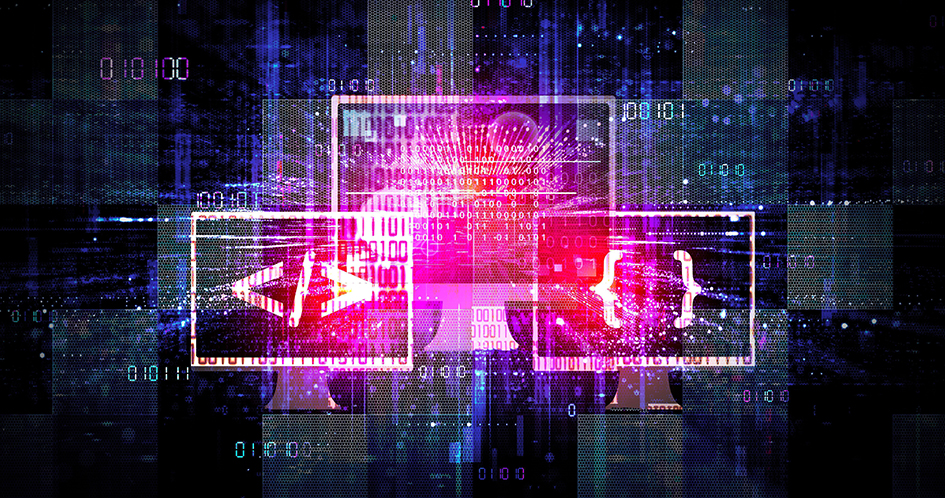There has been a lot of progress in the development of computers over the past 125 years. The effect of computers on society and daily life is undeniable. Coding on computers has been around for a long time.1 This sector has seen remarkable advancements, particularly in the capacity, speed, and interaction of computing devices. Let’s learn about the key moments in the history of computer science and coding in this article today.
Table of Contents
Advancements in Computer Science and Coding
Here are a few must-know landmarks in the evolution of computer science that set the stage for the digital age we live in today.
Binary Punch Cards
- Basile Bouchon developed a loom in 1725 that followed written directions to weave intricate designs. It is thought that Bouchon was the first person to use paper with punched holes as a machine controller. 2
- One indicates a hole that has been punched through, whereas a zero indicates that no such hole exists. Although much has changed since then, the basic building blocks of the software remain the same.
- A roll of perforated paper tape was employed in Basile Bouchon’s loom. In 1728, his aide Jean-Baptiste Falcon added punched cards to the loom, but it still wasn’t fully mechanized.2
Dumaresq
- A further seminal point in the evolution of computer science was the introduction of the first analog computers.
- The Dumaresq was the first to be developed in the modern age, in 1902. The dials and bars of this fire-control device could be turned or slid to determine the distance to an enemy ship or the angle at which it was being deflected. It was also used to calculate the course and speed of an opposing vessel.3
- 10 years after that, Arthur Pollen built upon that accomplishment by constructing a comparable device that was electronically operated.3
COBOL
- Every computer maker before 1959 utilized a unique programming language, but nothing worked together.4
- Due to the inability to work with computers from different manufacturers, a group of programmers collaborated to develop the first programming language capable of communicating with machines from various vendors.
- COBOL (Common, Object-Oriented, Business-Oriented Language) was the language they utilized. Over time, several different programming languages have been built upon the foundation laid by COBOL.4
Altair 8800
- As the first home computer to be commercially successful, it marked a watershed moment in the spread of computing technology and the beginning of the personal computer era. After being featured on the cover of the November 1974 issue of Popular Electronics, its sales skyrocketed.5
- Up until that moment, if one wanted a computer, each component was bought separately and then pieced together using detailed instructions. So, people were interested in buying this computer.5
Graphical User Interface
- Xerox debuted the Alto personal computer in the early 1970s. This computer had a graphical user interface and many of the same capabilities seen in modern operating systems, but it was not a commercial success. It had things like windows, pointers, menus, and icons.6
- Similar graphical user interfaces were available on the Xerox Star and Apple Lisa. But these computers remained prohibitively expensive and failed to win over consumers. The Macintosh from Apple was the first commercially successful graphical user interface computer. It was released in 1984.7
- It wasn’t until the following year that rival software companies Digital Research and Microsoft released their versions. Starting in the early 1990s, graphical user interfaces (GUIs) began to replace traditional text-based command lines as the primary method of navigating a computer.8
World Wide Web
- In the late 1980s, Tim Berners-Lee, a computer scientist, developed a program that allowed users to store information in files with links to and from other files. He coined the term “hypertext” to describe the technique and used it to link computers together to form the first internet.9
- Berners-Lee proposed an even more ambitious plan to link computers worldwide using a standardized hypertext document system. The launch of the World Wide Web shortly thereafter marked a watershed moment in the history of computing and the entire world.9
If you found this article interesting, you can find more interesting articles on BYJU’s FutureSchool Blog.
References
- Trivia Genius. (2020, April 29). Key moments in the history of computer science coding. Trivia Genius. Retrieved November 12, 2022, from http://editorialstage.triviagenius.com/key-moments-history-of-computer-science-coding/
- Norman. (2022, January 1). Basile Bouchon Begins the Automation of the Weaving Process : History of Information. Basile Bouchon Begins the Automation of the Weaving Process : History of Information. Retrieved November 26, 2022, from https://www.historyofinformation.com/detail.php?id=4727
- Degree Hub. (2022). 5 Pivotal Moments in the History of the Computer Science Field – Computer Science Degree Hub. Computer Science Degree Hub. Retrieved November 23, 2022, from https://www.computersciencedegreehub.com/lists/5-pivotal-moments-in-the-history-of-the-computer-science-field/
- Computer History: A Timeline of Computer Programming Languages | HP® Tech Takes. (2018, October 15). HP. Retrieved November 26, 2022, from https://www.hp.com/us-en/shop/tech-takes/computer-history-programming-languages
- Miller. (2014, December 19). The Altair 8800: The Machine That Launched the PC Revolution. PCMAG. Retrieved November 26, 2022, from https://www.pcmag.com/news/the-altair-8800-the-machine-that-launched-the-pc-revolution
- Alto. (2022). Xerox Alto – CHM Revolution. Xerox Alto – CHM Revolution. Retrieved November 26, 2022, from https://www.computerhistory.org/revolution/input-output/14/347
- Press, G. (2018, January 14). Apple, Xerox, IBM And Fumbling The Future. Forbes. Retrieved November 26, 2022, from https://www.forbes.com/sites/gilpress/2018/01/14/apple-xerox-ibm-and-fumbling-the-future/
- Heavy.AI. (2022). What is a Graphical User Interface? Definition and FAQs | HEAVY.AI. What Is a Graphical User Interface? Definition and FAQs | HEAVY.AI. Retrieved November 26, 2022, from https://www.heavy.ai/technical-glossary/graphical-user-interface
- Editors of Best Choice Schools. (2022). 5 Historical Events in the Evolution of the Field of Computer Science – Best Choice Schools. Best Choice Schools. Retrieved November 17, 2022, from https://www.bestchoiceschools.com/lists/5-historical-events-in-the-evolution-of-the-field-of-computer-science/




 Schedule a free class
Schedule a free class